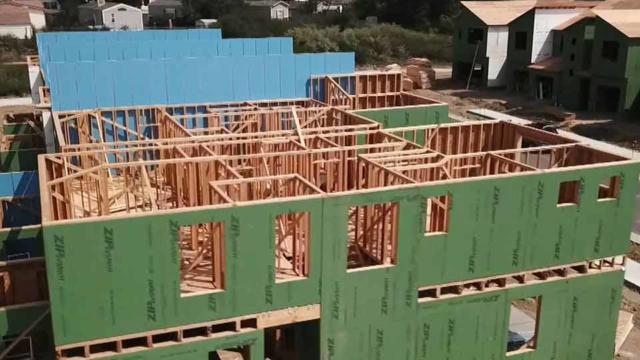Warning signs are flashing for the U.S. housing market. Existing home sales and new housing starts have both leveled off in recent months. Mortgage rates are on their way up. Homes have become more expensive. And a U.S. tariff on Canadian lumber has only added to the cost.
CGTN’s Hendrik Sybrandy reports.
“They went up 21 percent, then another 21, then another 21, and we went on a record run of price increases in the lumber side of things,” said Dave Hoglund, Vice President of Purchasing for Builders, which provides building materials to contractors in six U.S. states. He said higher lumber costs, along with a lack of available land for new homes in places like Colorado and a shortage of construction labor have made homes significantly more expensive.
“We’re generally seeing that it’s affecting our overall cost of a home somewhere in the five percent range,” said Jason Brown, President of Ascent Builders. He said a 20 percent U.S. tariff on Canadian softwood lumber, imposed last year, triggered the price spike. Western Canadian lumber now costs nearly 80 percent more than it did a year ago.
“We’re in sort of uncharted territory,” Brown remarked. “If you look at the absolute rates we’re all paying for lumber, we’ve never seen it this high.”
The tariff was the Trump Administration’s answer to a glut of cheap Canadian lumber exports to the U.S. earlier this decade. It was meant to boost domestic lumber producers. Tree disease, rail slowdowns and wildfires have also caused Canadian imports to slow down.
“When the Canadian lumber went up, all the domestic lumber went with it,” Hoglund said. “So everybody just rode the wave.”
One expert said that wave has crashed on small builders in particular.
“It’s going to affect the guys that are going to Home Depot to buy lumber or plywood or anything like that,” said Eric Holt, an Assistant Professor at the University of Denver’s Daniels College of Business. “So now maybe they slow down their spending on their home remodel projects.”
Bigger lumber companies and builders buy their supplies well in advance but once contracts are written, they can’t always pass along price increases to their customers.
“That’s what makes the world go round, is having those gross margin dollars, and lack of them has been a problem the last 18 months,” Hoglund said.
The National Association of Home Builders claims the tariff has added $9,000 to the cost of an average single-family home.
“The lumber tariff is a tax on homeowners and renters,” said Randy Noel, NAHB Chairman. “It’s time to get back to the negotiating table and reach a trade agreement with Canada.”
Brown thinks the tariff tends to get buried as an issue when homes keep appreciating in hot markets like Denver.
“Politically I agree with it,” Brown said of the tariff. “Being in the home building industry, I don’t like it.”
He suspects buyers will sit up and take notice if or when those prices level off.
Frank Zhang breaks down far-reaching impact of U.S. lumber tariffs
CGTN’s Rachelle Akuffo spoke with Frank Zhang, legal counsel for China’s National Forest Products Industry Association, about U.S. tariffs on lumber and their impact on industries across the world.
 CGTN America
CGTN America

